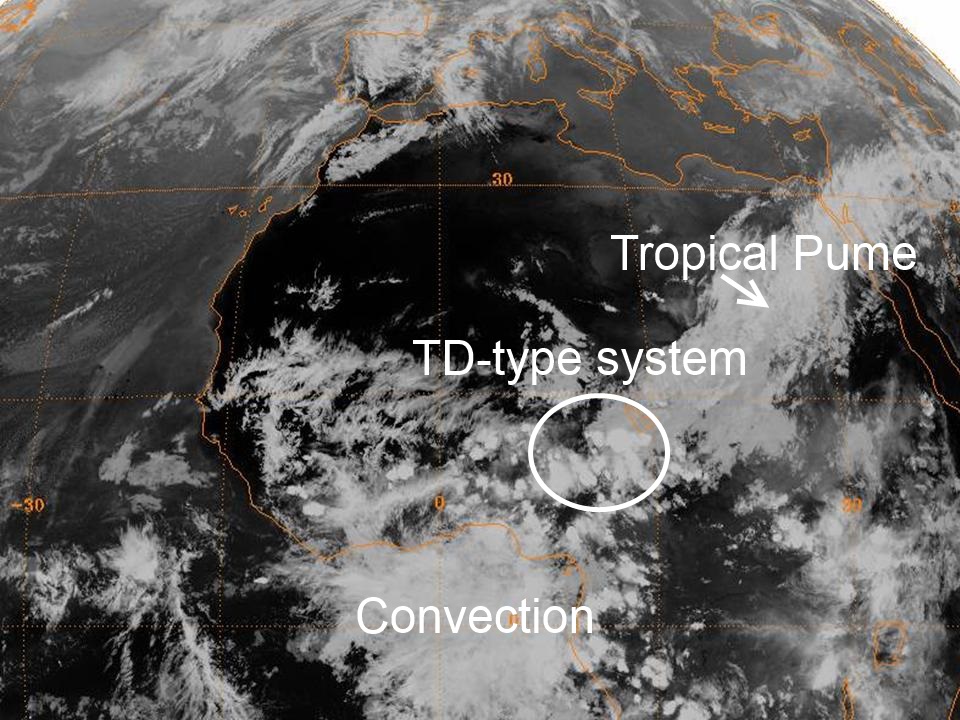During spring 2009 I started experimenting with 7- to 14-day forecasts for West Africa as part of a project to help with meningitis mitigation in the region. A single forecast for West Africa shed light on a type of system capable of changing conditions in the region, one that can contribute to the cessation of meningitis epidemics. The findings were recently published after many years of work.
Forecasting for the health sector
The Meningitis Belt in Africa is an area of the continent that experiences severe epidemics of the disease. The largest epidemic recorded to date occurred in 1996–1997, causing over 250,000 cases and 25,000 deaths. The region continues to experience outbreaks of various scales, with 2009 being particularly severe in Nigeria and Niger.
The goal of my part of the project was to see if we could forecast the onset of humidity that would contribute to the collapse of disease epidemic in the region. This would give guidance for personnel and resources to be shifted to regions still experiencing outbreaks.
My forecasting scheme was to do groups of eight simulations, an ensemble, so to speak, with the Weather Research and Forecasting (WRF) model twice a day. One of the forecasts I ran showed something very peculiar: a particularly strong weather system that could bring significant rain and moisture to areas experiencing the disease within 10 days. The event turned out to be correct in scale and significance and the overall atmospheric conditions that contributed to it had much more to tell us.
Weather and climate in the tropics
Weather and climate in the tropics are very different than the type we experience here in the mid-latitudes. Near the equator the amount of sunlight remains fairly constant throughout the year and Earth’s rotation is not as large a factor. Thus, rain and clouds can occur more spontaneously compared to those at higher latitudes, where other large-scale forcings are at play. This makes it more difficult to predict weather patterns and why my simulations over West Africa were of such keen interest.
The forecast I carried out showed that a Tropical Depression-type (TD-type) system would traverse the width of the Sahel (a transition zone between the moist rainforest and the Sahara Desert) during early-to-mid May 2009. TD-type systems consist of an organized group of thunderstorms in a low pressure system and tend to be precursors to hurricanes during the summer months in the Atlantic. Over land they are the primary mechanism for delivering rainfall to West Africa during the summer monsoon.
A closer look at what happened during the time this system traversed the Meningitis Belt showed that it was far more complex than a single TD-type system. If you look at the picture below it’s easy to recognize where it might be raining by the cloud masses over the continent. However, now we know that each part of the cloud masses plays a different role.
For example, the trail of clouds angled northeastward from tropical Africa to the Eastern Mediterranean is called a “tropical plume“. This suggests an extra-tropical system over southern Europe may have contributed to the event.
The mass of convection near the equator may look chaotic, but there is underlying structure within the clouds. One such feature is the Madden-Julian Oscillation (MJO), a natural climate feature that explains weather variations in the tropics. Incidentally, the MJO has been found to have profound effects globally, even affecting rainfall patterns along the west coast of North America. In the case of the West Africa event, it helped to enhance precipitation.
A way forward for meningitis-climate research
Meningitis in Africa is a complicated issue. There are both environmental and societal aspects that affect the spread and cessation of the disease. My research was only a piece of a much larger effort. Our larger group of multidisciplinary researchers has provided a foundation for understanding meningitis-related knowledge, attitudes, and practices across the meningitis belt, and rendered one of the first estimates of the household costs of meningitis.
Our work contributed to further understanding the onset and climatology of the African Monsoon and its relationship to meningitis. A single forecast on my part developed into a wider analysis of how we can use new knowledge of Africa’s climate to aid in meningitis mitigation. This is how climate science moves forward, by carrying out experiments to test hypotheses, and it gets us closer to understanding our place in the Earth system.



